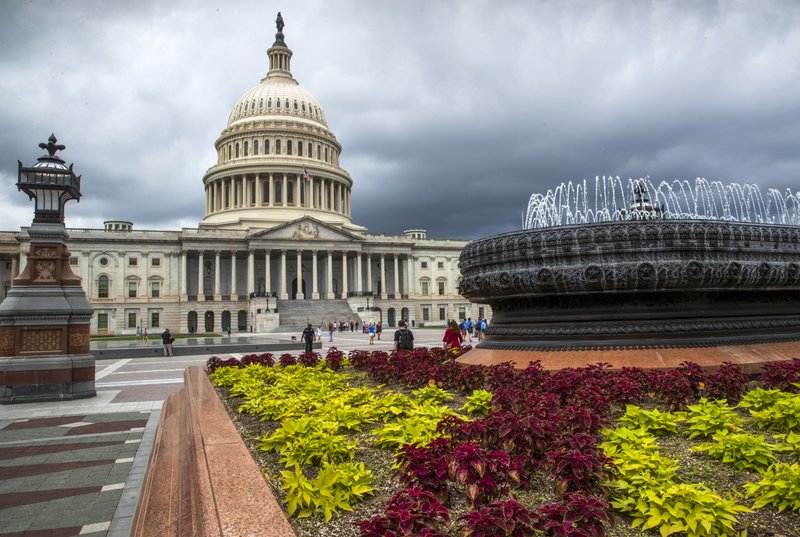WASHINGTON -- The federal government piled up a record deficit in April, traditionally a month of big budget surpluses.
The sea of red ink is being created by a drop in revenue and a large increase in federal spending to fund efforts to deal with the coronavirus pandemic.
The Treasury Department said Tuesday that the government racked up a shortfall of $737.9 billion last month. That was more than three times larger than the previous record monthly deficit of $235 billion set in February.
The overall federal budget deficit so far for fiscal 2020, which began Oct. 1, climbed to $1.48 trillion.
[CORONAVIRUS: Click here for our complete coverage » arkansasonline.com/coronavirus]
Nancy Vanden Houten, lead U.S. financial economist for Oxford Economics, forecast the deficit for the entire budget year could hit $3.2 trillion or higher, depending on whether Congress passes more relief packages.
On Tuesday, House Speaker Nancy Pelosi unveiled a more than $3 trillion package with nearly $1 trillion earmarked in aid for states and cities. The proposal faces uncertain prospects in the Senate.
April is typically a surplus month for the Treasury as income tax payments come due. Last year during the month, the U.S. had a $160.3 billion surplus. This year, however, receipts fell nearly 55% compared with April 2019 to $241.9 billion. Payments to the government cratered as individual and corporate income taxes declined after the Trump Administration's decision to push the tax-filing and payment deadline to July 15.
And, two major government relief efforts pushed spending to almost $980 billion, more than 2½ times what it was a year ago, the Treasury Department's report showed Tuesday. Special payments to individuals and families totaled $217 billion, while Medicare payments, grants to states and local governments and unemployment compensation also contributed to the spending surge.
The Congressional Budget Office has estimated that all the spending the government has done to deal with what is expected to be a sharp recession will push the deficit for the entire year to $3.7 trillion.
That would surpass the previous record $1.4 trillion set in 2009, the first of four years in which the annual deficits climbed above $1 trillion as the government battled to pull the country out of a recession.
For the first seven months of the budget year, revenue totaled $1.85 trillion, a drop of 9.7% from the same period a year ago. Government spending totaled $3.33 trillion, an increase of 29.3% from a year ago.
The deficit for the first seven months of this budget year of $1.48 trillion is 79% larger than the $530.9 billion deficit recorded for the first seven months of the last budget year.
The Treasury Department recently said it planned to borrow $3 trillion between April and June to cover all of its new planned spending.
Accumulating deficits add to the overall federal debt, which totaled more than $25.2 trillion as of Sunday . That figure includes more than $6 trillion the government owes itself, including about $2.9 trillion borrowed from the Social Security Trust Fund, according to Treasury Department reports.
Independent analysts have projected the annual federal deficit could exceed $4 trillion by the end of this fiscal year, which concludes Sept. 30.
"We have run $1 trillion deficits annually only four times in American history. At this point in the pandemic and recession, we are looking at costs of close to $1 trillion per month," said Brian Riedl, a policy analyst at the libertarian-leaning Manhattan Institute.
But some economists argue that additional spending is necessary because the threat of inflation remains low and Americans across the country are being hit by economic hardship.
"Every dollar of deficit spending is absolutely worth it. Congress is the only one that does not have to balance its budget today," said Claudia Sahm, an economist at the Washington Center for Equitable Growth. "If Congress does not spend trillions more, we will pay for their error for a generation."
Information for this story was contributed by Martin Crutsinger of the Associated Press, Vince Golle of Bloomberg News and Jeff Stein of The Washington Post.
A Section on 05/13/2020

